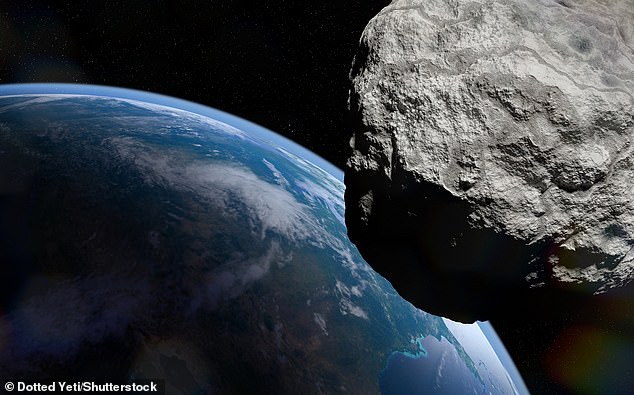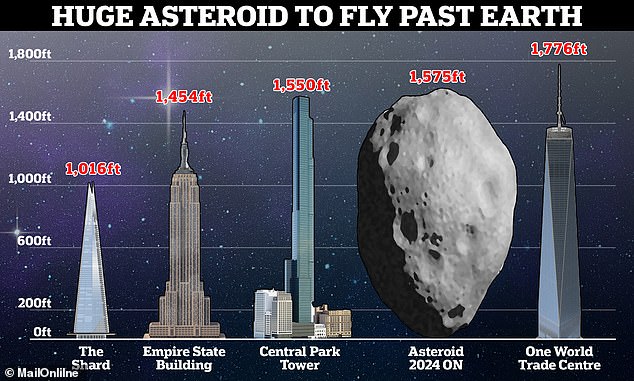A “potentially hazardous” asteroid the size of a skyscraper will pass close to our planet next week, according to NASA.
The asteroid, named 2024 ON, is expected to pass within 620,000 miles of Earth’s surface at 10:19 UTC (11:01 BST) on Tuesday, September 17.
2024 ON has a diameter of between 721 and 1,575 feet (220 to 480 meters), meaning it could be nearly as large as New York’s One World Trade Center.
As it passes close to Earth, it will be traveling at a speed of 8.8 kilometers per second or 19,685 miles per hour, about 25 times the speed of sound.
The asteroid is “potentially hazardous,” although fortunately it is not expected to pose a danger to our planet and its inhabitants.
2024 ON has a diameter of between 721 and 1,575 feet (220 to 480 meters), meaning it could be almost as large as One World Trade Center in New York (1,776 feet tall).
An asteroid is defined as “potentially hazardous” if it passes within 0.05 astronomical units (4.65 million miles) of Earth and has a diameter greater than 459 feet (140 meters).
Despite being more than twice as far away as the Moon when it approaches, the asteroid is classified as a near-Earth object (NEO) and is being tracked by the space agency.
‘NEOs are comets and asteroids that have been pushed by the gravitational pull of nearby planets into orbits that allow them to enter Earth’s neighborhood,’ NASA said.
‘Comets, composed mostly of water ice with embedded dust particles, originally formed in the cold outer planetary system, while most rocky asteroids formed in the warmer inner solar system, between the orbits of Mars and Jupiter.
‘Scientific interest in comets and asteroids is largely due to their status as relatively undisturbed remnants of the solar system’s formation process some 4.6 billion years ago.’

The asteroid, named 2024 ON, is expected to pass within 620,000 miles of Earth’s surface at 10:19 UTC (11:01 BST) on Tuesday (artist’s impression)
NASA indicates the year 2024 as One of the next close approaches in its online tracker, which compiles the next objects that are getting closer and closer to Earth.
Unfortunately, this asteroid will be too small to be seen with the naked eye, or even with an average telescope.
With a maximum diameter of 1,575 feet, 2024 ON is actually insignificant compared to the largest known asteroid, Ceres, which is 580 miles across (over 3 million feet).
Asteroids (large rocky chunks left over from collisions during the ancient solar system) travel at high speeds due to the immense gravitational pull exerted on them.
As they orbit the Sun in “elliptical” (elongated) orbits, asteroids also rotate erratically, tumbling as they go.

